Birds are great carpenters and take good care of their homes. Well, almost all birds. Yet, the type of nest and materials used differ from species to species. Some birds make the slightest effort while others build extraordinary homes for their eggs. For you to have biodiversity in your area, it is essential to have an active birdlife. To gain a vibrant birdlife, you can help the birds building their nests and welcoming them to move in.
You can help the birds by supplying them with different materials like dried grass, pine needles, bark, fluffy plant fiber (cattail pod, milkweed pod, goldenrod), small twigs, and plant fibers. Making this accessible for the birds will help accelerate the bird population in your area in no time.
Although many people believe bird nests only are a pile of twigs, bird nests are, in fact, extremely methodic and meticulously built where the placing of every single twig, leaf, feather, and feather are heavily considered.
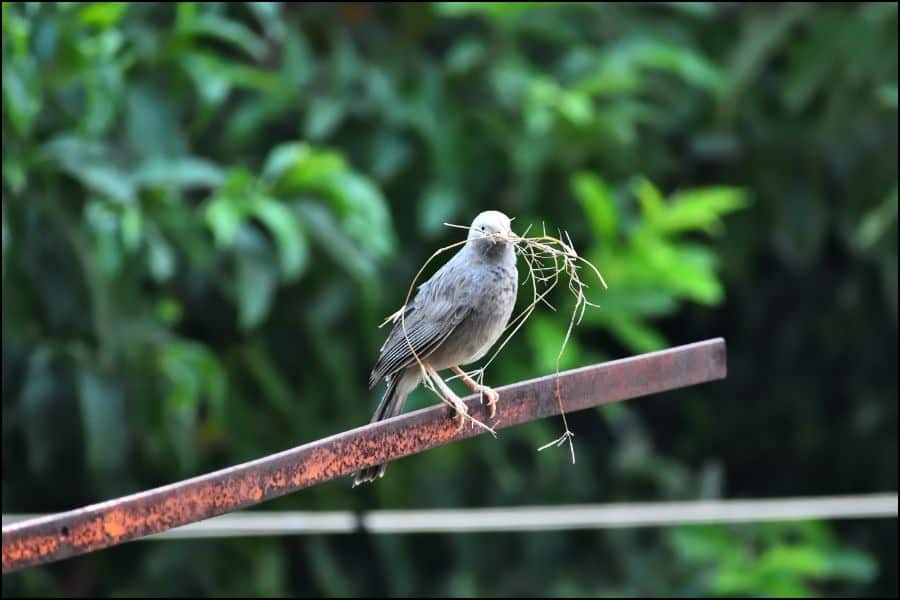
Different types of bird nests
Different species build different types of nests. Despite being the same type, they also come in different sizes. However, all birds don’t build nests. Some species lay their eggs directly on the ground or between rocks. Some birds build new nests every year, while others extend their current nest a bit more annually. And some are happy with what they have.
Depending on the species of bird determines the type of bird nest that is built. While larger birds, for example, hawks, prefer a platform-shaped nest, the smaller blue jay likes a smaller cup-shaped one better. However, some birds are satisfied with a dozen twigs and call it a day. Some bird species lay their eggs in other bird’s active nests.

Cup nests
Cup-shaped nests are smoothly hemispherical and are usually a bit deep to hold the eggs in place without risking them falling out. Mostly the cups are made of grasses and feathers, which are very compact and well-heeled. Some bird species also use a huge amount of spider silk when building their nests. The silk is both strong and durable but also provides great flexibility. Due to its stickiness, it also keeps the grasses in their place.

Natural and tree cavities
Natural cavities are often living or dead woods and, in some cases, in the trunks of tree ferns. In addition, a small number of bird species excavate their own cavities—for example, woodpeckers, nuthatches, and barbets. However, it’s hard work to excavate your own home, and even for the woodpecker who is an expert, it usually takes 2 weeks.
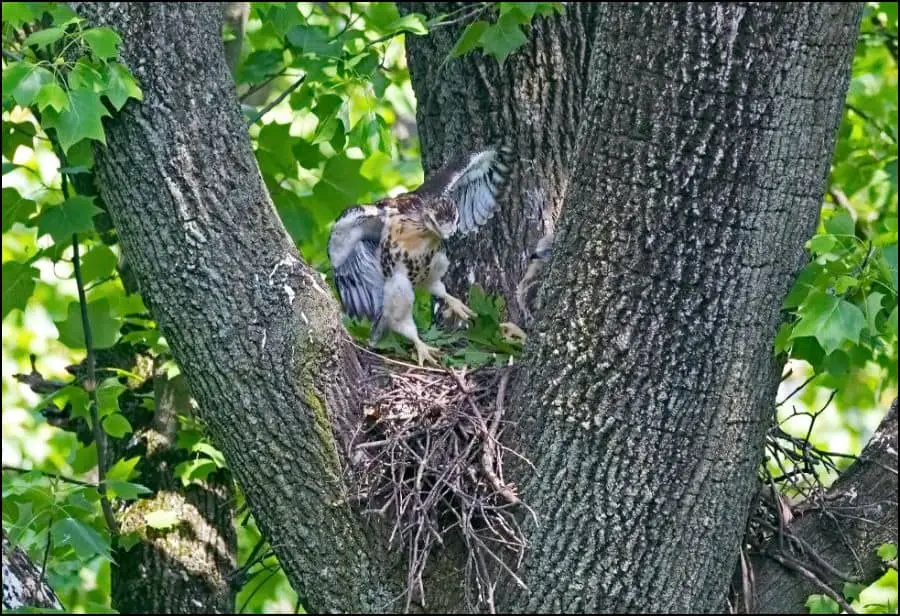
Holes and crevices
Some birds enjoy laying their eggs in holes and rock crevices. The house sparrow and turkey vulture are examples of bird species that have their nest in crevices. The sparrows love to have their nest in house crevices but also nesting in a nice birdhouse. Bluebirds, chickadees, and house wrens are other examples of birds that enjoy building a nest inside birdhouses.
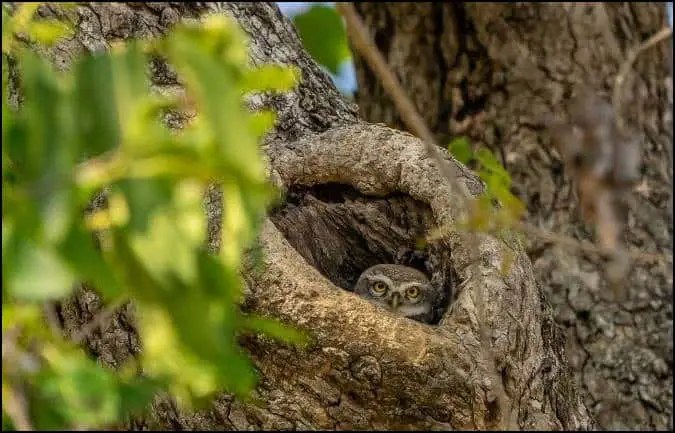
Shallow depressions
Potoos are an example of a bird that likes to lay its single egg in a shallow depression. These depressions don’t require much effort or building material, but instead just some quick digging.
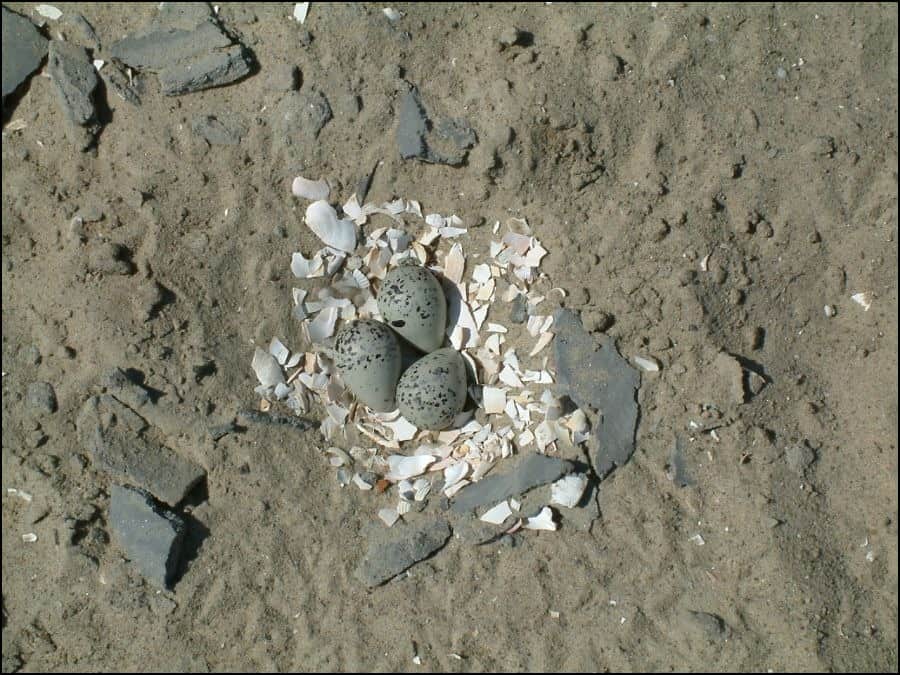
Platforms
Platforms are either built on top of a tree or the ground. Bald eagles elevated nesting platforms are impressive. In some cases, they can weigh as much as three metric tons. The bald eagle is one of those types of bird that expands its nest each breeding season and increases its size by up to a foot in height and diameter each year.
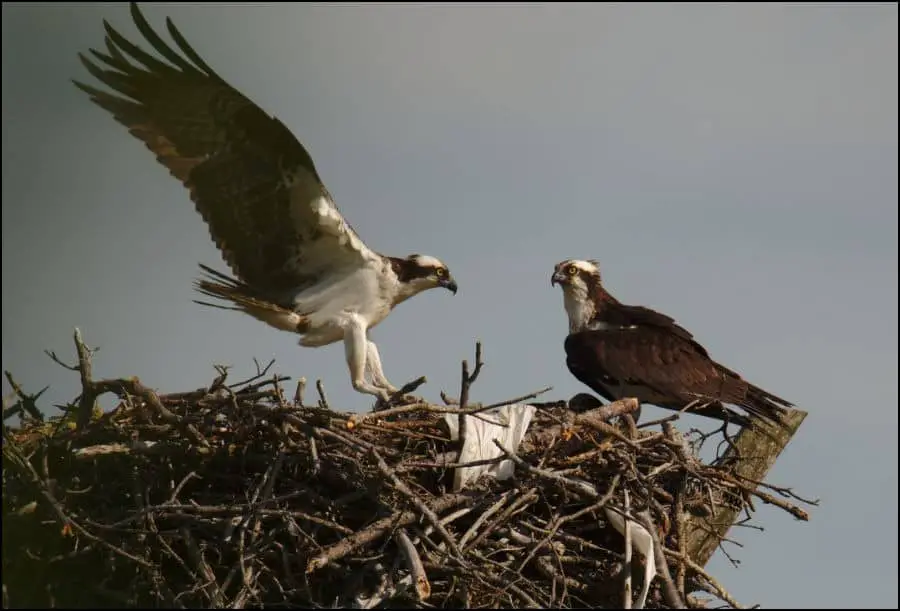
Pendent
The pendent nest is built with pliable materials. Dry grasses and plant fibers shaped almost like the name suggest – like a pendant or bellt. Oropendola and Cacique are examples of birds who build their nests as pendents.
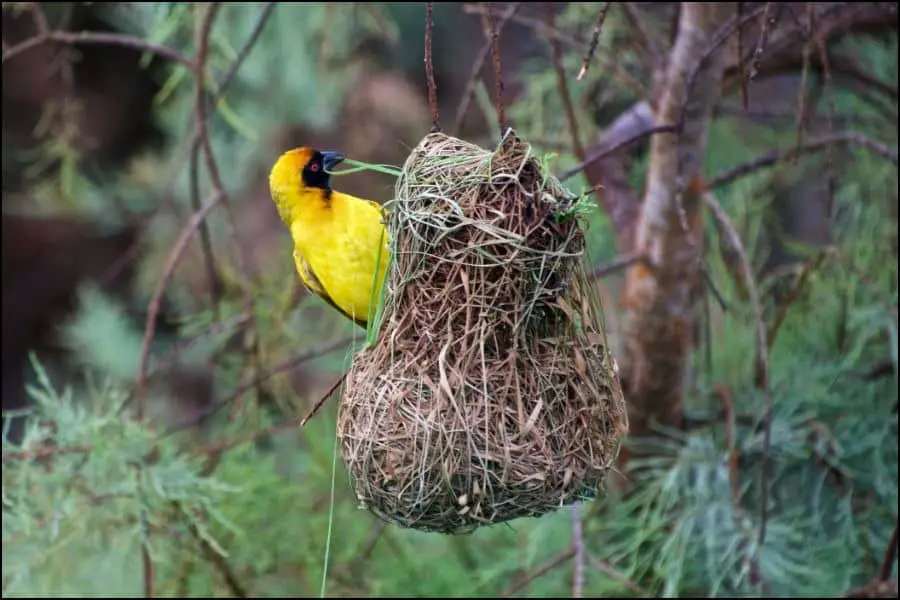
Bird and which type of nest they are building
| Bird | Type of nest |
| American Crow | Cup |
| American Goldfinch | Cup |
| American Robin | Cup |
| Black-capped Chickadee | Natural cavities |
| Blue Jay | Cup |
| Canada Goose | Cup |
| Carolina Wren | Cup |
| Common Grackle | Cup |
| Dark-eyed Junco | Cup |
| Downy Woodpecker | Tree cavities |
| European Starling | Natural cavities |
| Great Blue Heron | Platform |
| House Sparrow | Holes and crevices |
| Mallard | Shallow depression |
| Mourning Dove | Platform |
| Northern Cardinal | Cup |
| Northern Flicker | Tree cavities |
| Northern Mockingbird | Cup |
| Painted Bunting | Cup |
| Red-bellied Woodpecker | Tree cavities |
| Red-tailed Hawk | Platform |
| Red-winged Blackbird | Cup |
| Song Sparrow | Cup |
| Tufted Titmouse | Cup inside cavities |
| Turkey Vulture | Rock crevices |
| White-breasted Nuthatch | Cup |
How do I help the birds with their nest?
Before you start helping the birds, you will need to know which birds are in your area. I would assume you already know this.
The best advice I can give you is to be as broad as possible with your help. Instead of focusing only on one type of bird’s nest, you can offer your help to all types of birds.
An easy way to supply the birds with what they need is to serve it to them in a bird suet feeder you hang in a tree or put in a safe place on the ground. The reason for putting it in a safe place is you want it to look kind of messy. The grass you put in will flutter in the wind and get the bird’s attention. At the same time, you don’t want it to be mistaken for trash. The material should be easily accessed and easy for the birds to grab.
If you are going for a walk, you can collect small twigs at the same time. Then, you can place the twigs in a pile next to a tree when you are done with your walk. The twigs are perfect at 4 inches (10cm).
Which material can you provide for the birds?
- Small twigs
- Pine needles
- A lot of dry grass
- Longer, thicker plant fiber
- Bark strips
- Dried grass clippings
- Fluffy plants (Cattail, top of goldenrod)
- Moss
- Dead leaves
- Feathers
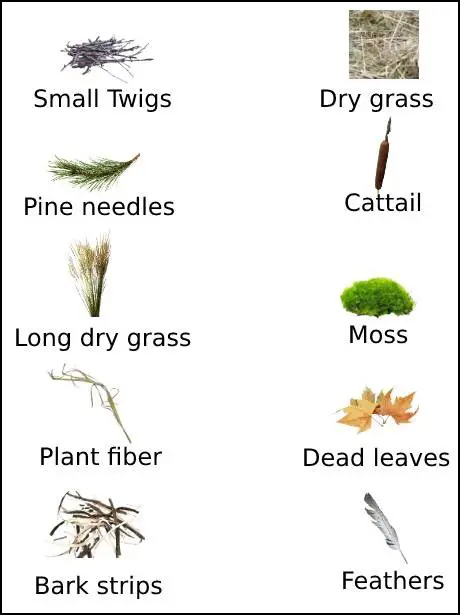
Which materials to not to give the birds for nesting
- Animal fur
There are discussions about whether you should give animal fur to the birds or not. Some suggest it’s fine, but studies from Cornell University have shown examples of birds getting their legs stuck in the hair. There is also a risk of fleas or ticks. So I would suggest keeping it safe and avoid animal fur from the bird’s nests.
- Human hair
Even though human hair seems like a natural thing to give the birds you shouldn’t. Human hair has oils, chemicals and could easily be wrapped around the birds feet.
- Dryer lint
I have to admit I’ve been decorating the birdhouse interior with dryer lint in my early days. The softness of it would be a great start for newborns. But, little did I know the chemicals from the soap and softener in the lint were bad for birds, and they shouldn’t be in contact with it.
- Yarn
Wildlife experts warn about supplying the birds with yarn since the birds’ risk gets their legs entangled. The other reason for not using yarn is because it is relatively hard to degrade.
- Strings
Strings should not be given to birds for nesting. Strings easily get wrapped around legs and beaks and should be completely avoided.
- Felt
Even though a nice warm blanket or other cloth feels like a good idea, you shouldn’t provide the birds with synthetic material or cotton. They might react badly to the chemicals in the colorings.
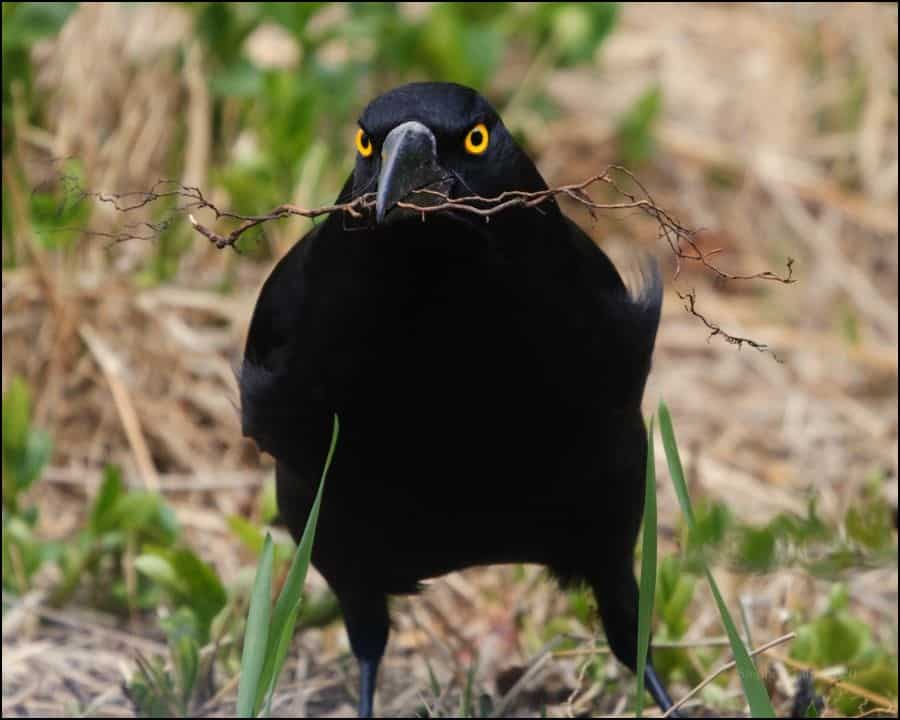
Other ways to help the birds in their nest.
The most common reason birds are building nests is because they need to lay their eggs somewhere and give their younglings a safe place. Unfortunately, when the bird mother lays the eggs, she lacks important nutrients—the most common calcium. You can help the mother bird recover quicker by giving her eggshells to eat. Eggshells provide a good amount of Calcium and help her get back on her feet again. Make sure the shells are broken down into small pieces.
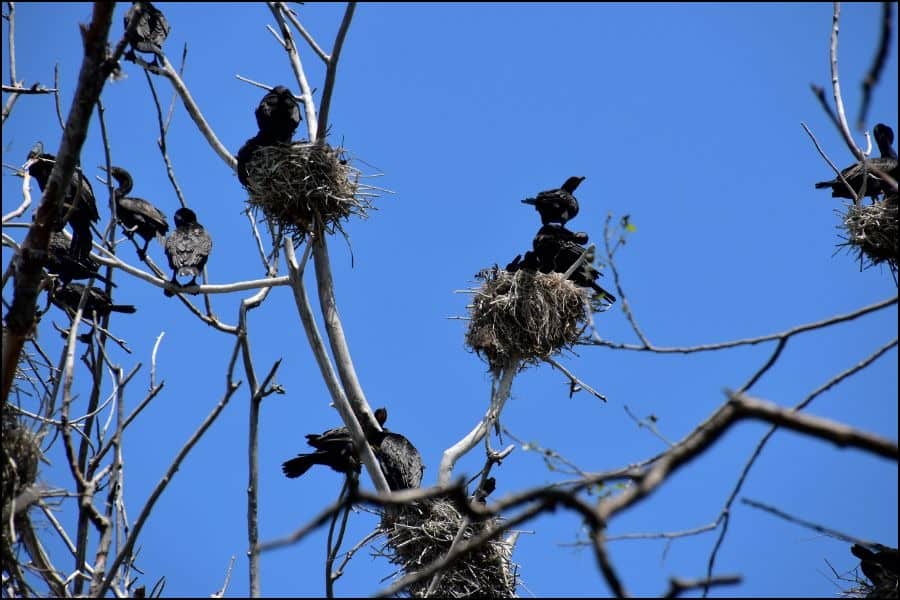
Conclusion of helping birds with their nests.
It’s easy to help the birds building their nests. But, before you start, check what birds you have in your area and for whom you wish to contribute your help. If there are smaller birds, there’s a higher chance they are laying their eggs in cup-shaped nests. Larger birds prefer cavities or platforms.
If there are smaller birds you wish to aid, focus on dry grass, pine needles, and feathers. If your focus is larger birds, then aim for gathering small twigs for them. For example, I would hang two different bird suet feeders in two different trees. One for the smaller birds and one for the larger birds filled with twigs, bark strips, leaves, and dry grass. Just in case if there would be a competition over the tree.
There are some things you should avoid putting in the feeders—strings, yarn, hair, fur, and dryer lint a both dangerous and toxic for birds. Again, I understand you mean well, but it can harm the birds, accomplishing the opposite goal.
You can support the bird mother by putting out some broken-down eggshells. The eggshells will provide her with the Calcium she will lack when she is gravid.
